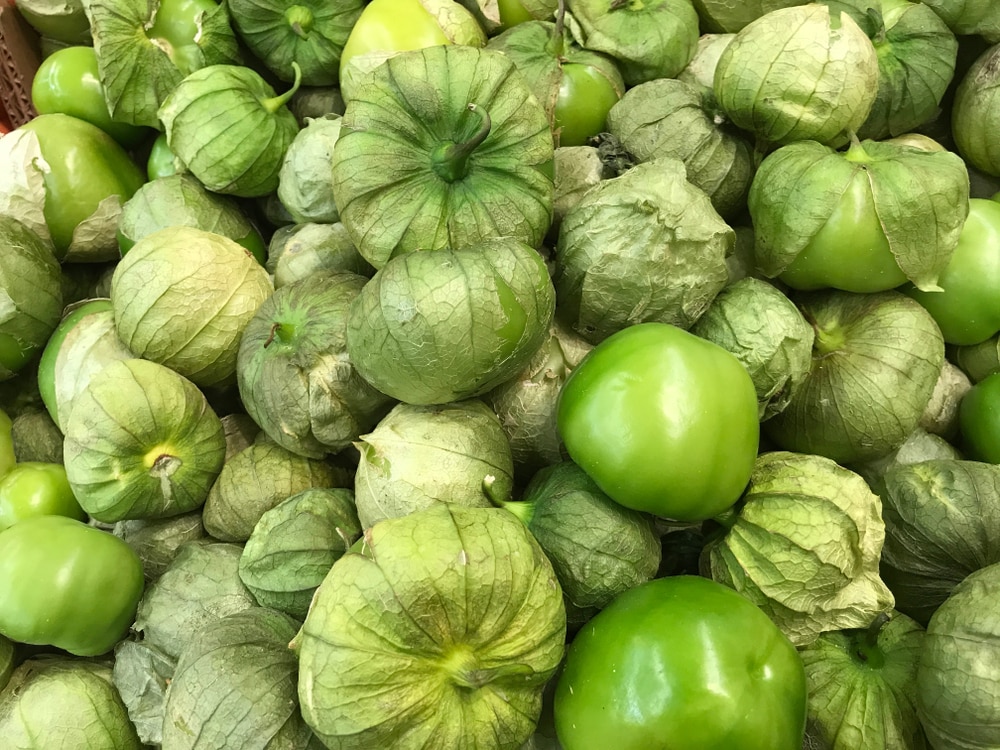
Mexican cuisine is known for the spicy and tangy food items – who doesn’t like the tacos, right? However, it’s safe to say that Mexican chefs use specific ingredients to add unique spiciness to the dishes. For this reason, they depend on tomatillos that add a punch of flavor and color to the recipes. However, canned tomatillos vs fresh tomatillos are common choices available and many people don’t understand the difference. To help you out, we are sharing information about both of them!
Tomatillo – What Is It?
Tomatillos are small and green fruits with a spherical appearance. While they look a lot like small tomatoes, they are actually different. These can be consumed in cooked or raw form and are usually used for making salsa verde. In addition, they have a subtle fruity flavor and a bit of earthiness. Also, it has tarty and sweet flavors and has an acidic nature in its raw form. However, when cooked, the flavor tones down a bit.
Tomatillos are known for the paper-like husk as a coverage. It is harvested in the green form, and when ripe more, the purple or yellow streak may appear. These tomatillos are ready to be consumed when the bottom side starts splitting. Now, let’s check out the difference between fresh and canned tomatillos!
Canned Tomatillos vs Fresh
Canned Tomatillos
If you want to enjoy the unique texture and flavor of tomatillos but don’t want to be bothered with the extra preparation and cooking, you can opt for canned tomatillos. The canned tomatillos are highly likely to be tartier and tangier which is why they are used in traditional recipes and green salsa recipes. Having said that, canned tomatillos can be used for making salsa.
Canned tomatillos boast the flavor that you will want to add to every savory dish of yours. It wouldn’t be wrong to say that cooking possibilities are endless with the canned tomatillos. This is because you can make spicy and tangy salsa for dips or coast the enchiladas. In addition, they make a great addition to breakfast burritos and omelets.
Canned tomatillos are one of the most versatile ingredients. For instance, you can blend them in a sauce and use them to marinate beef and pork. Even more, it adds an amazing flavor to chilaquiles and meatballs for improving the spiciness. Since we are talking about canned tomatillos, they are basically ready to serve and be used – they won’t require any preparation or cooking.
The canned tomatillos are suitable if you are preparing some Mexican dishes. These can be easily found in the grocery stores but you might have to look in the specialized stores as it’s a Mexican staple. Also, the canned tomatillos are available in whole as well as sliced versions. All in all, if you are looking for something convenient, the canned tomatillos are perfect for you!
Fresh Tomatillos
The fresh tomatillos are suitable for everyone who likes to enjoy the raw flavors. The fresh tomatillos are available in the grocery stores as well as nearby farmer’s markets. However, they are easy to find during the fall season or the end of the spring season. The fresh tomatillos are low likely to be consumed in raw form because they are too tangy.
The fresh tomatillos tend to have a vegetal and young form with a tarty flavor and firm appearance. These fresh ones can be cooked and the bright green color will be mellowed down. In addition, cooking will intensify the sweet and fruity flavors. Fresh tomatillos are covered in the husk (the papery layer). While they usually have a green appearance, they will also be seen in yellow and purple streaks.
Keep in mind that fresh tomatillos should have a bright green appearance and it’s best to choose the smaller ones as they have more concentrated sweetness and flavor. As far as preparing the fresh tomatillos is concerned, the husk must be removed. In addition, it might have a sticky layer that needs to be washed before you cook or eat them.
Also, the fresh tomatillos will have small white seeds which are fully edible and can be added to the recipe without any second thoughts. As for cooking, it’s best to chop them as it helps dissolve the flavor into the recipe.